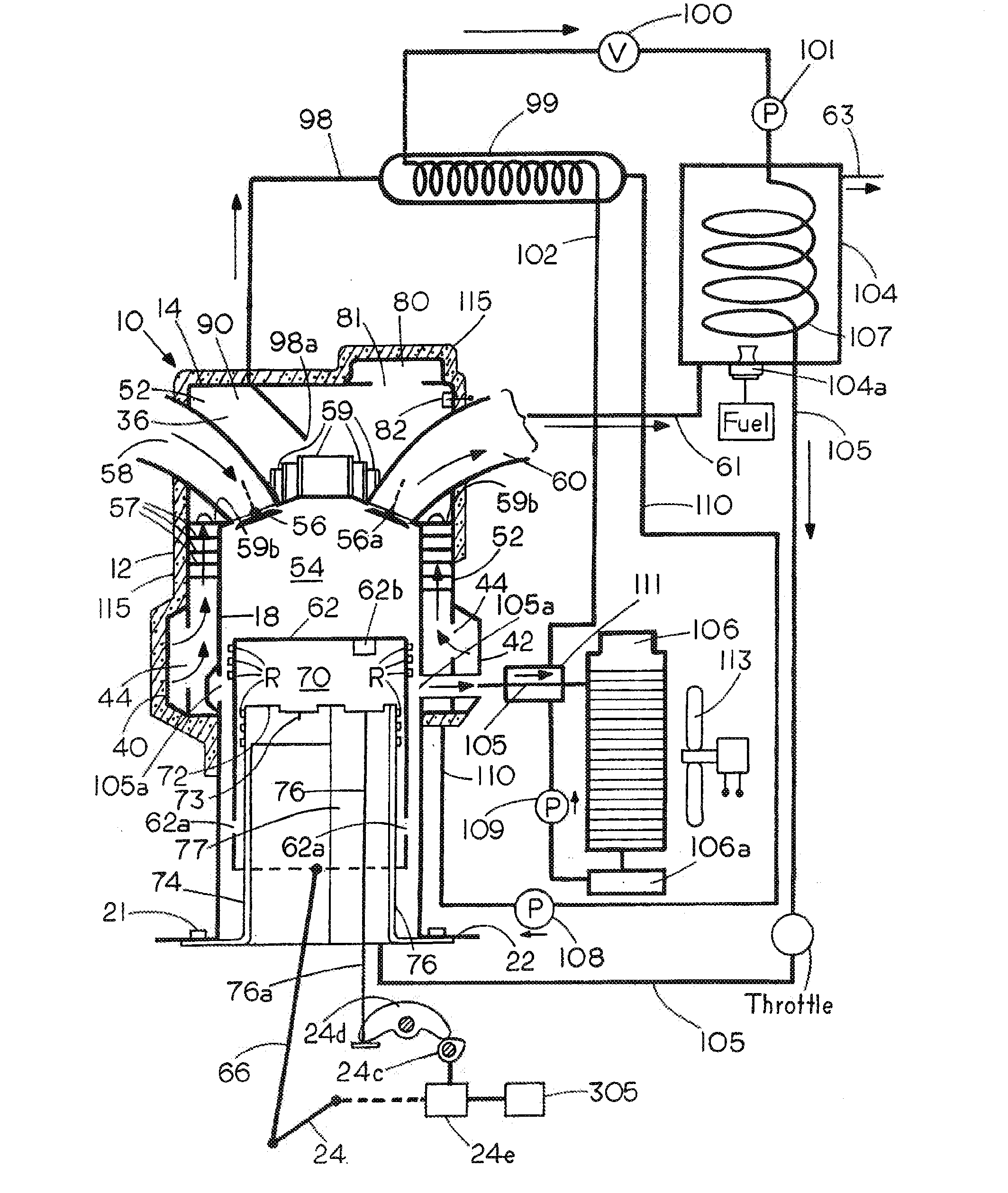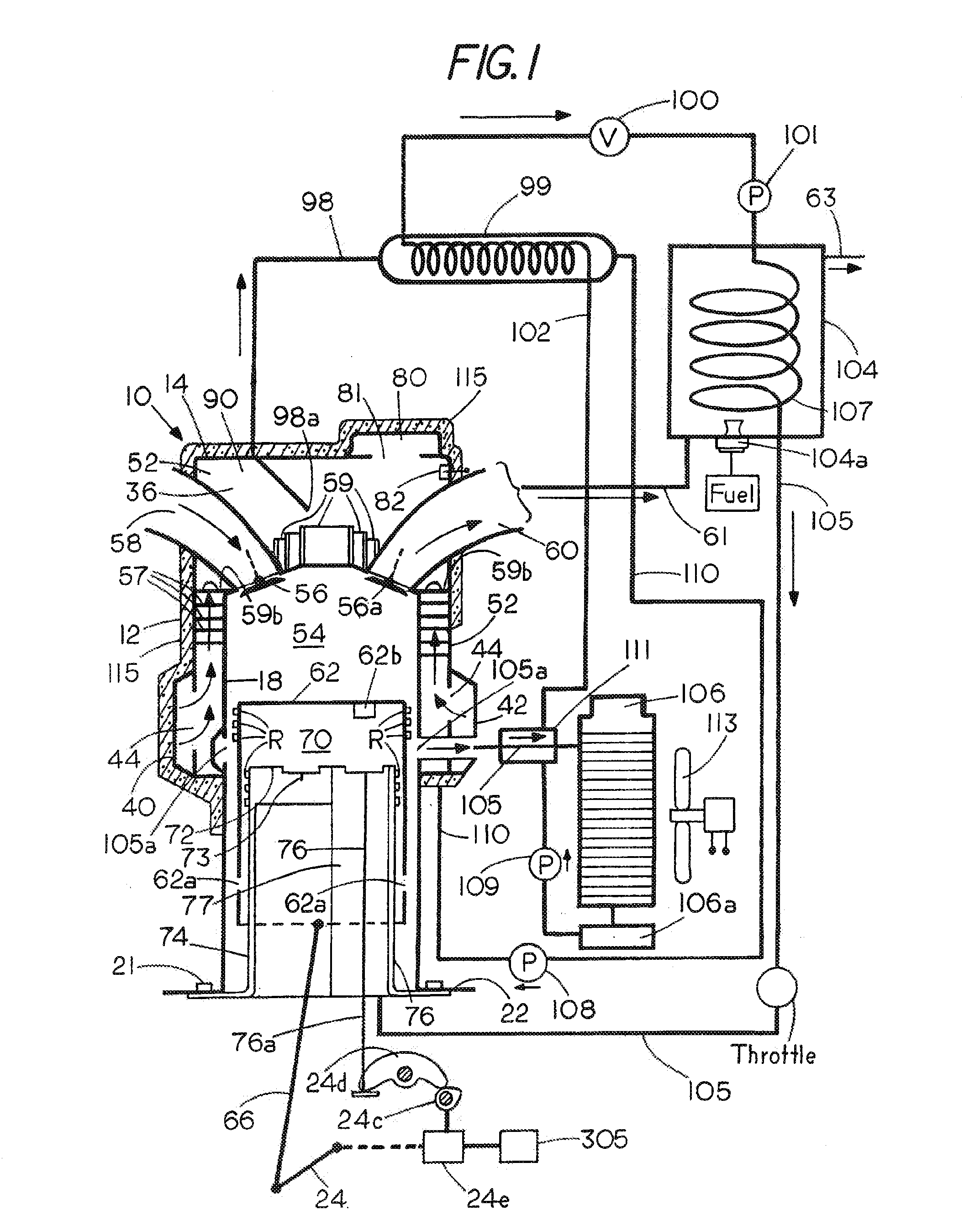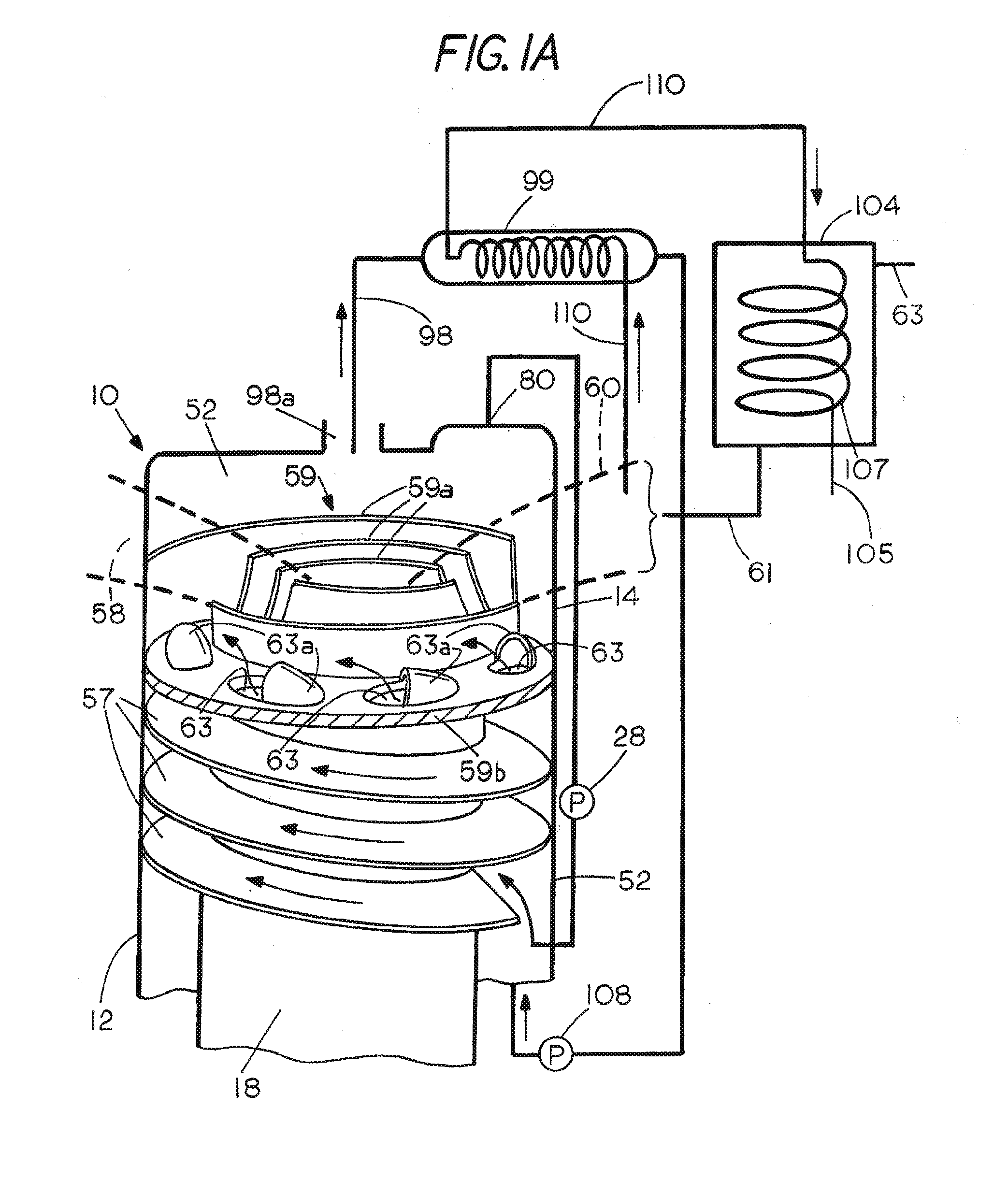High Efficiency Dual Cycle Internal Combustion Steam Engine and Method
- Summary
- Abstract
- Description
- Claims
- Application Information
AI Technical Summary
Benefits of technology
Problems solved by technology
Method used
Image
Examples
example 1
[0032]A one cylinder I.C. engine having a bore of 96 mm and a stroke of 78 mm was tested and found at 5994 rpm to produce a coolant flow of 4330 lb / hr which translated into an energy transfer rate of 27022 Btu / hr (ΔT of 6.24° F.). With an eight percent steam cutoff as a fraction of the steam power stroke, the combustion exhaust gases in generator 104 were sufficient to sustain a water evaporation rate of 313 lb / hr for steam at 800° F. and 800 psia, The pumps 28 and 108 and / or a coolant thermostat (not shown) are intentionally regulated by the central engine management computer 305 (FIG. 1) to raise the coolant temperature to 250° F. The feed water in tank 109 is at 200° F. Using a heat exchanger 99 that is able to provide an efficiency of 80% so as to heat the feed water to 240° F. (200° F.+80% of 50° F.), the heat absorbed from coolant equals 40° F.×313 lb / hr or 12520 Btu / hr which amounts to about 46% (12520÷27022) of the coolant heat having been transferred to feed water. The rema...
example 2
[0033]In a second run otherwise similar to Example 1 at 2996 rpm, coolant flow was 2646 lb / hr that translated to an energy transfer rate of 34148 Btu / hr (ΔT of 12.9° F.). Exhaust gas provided sufficient heat for the superheater 104 to sustain an indicated water evaporation rate of 156 lb / hr. Heated by coolant at 300° F. in a heat exchanger 99 of 80% efficiency to 280° F. (200+80% of 100° F.), the 200° F. feed water absorbs 80° F.×156 lb / hr or 12480 Btu / hr which is about 36% (12480÷34148) of the coolant heat. The exhaust gases in this run provided another 28000-33000 Btu / hr to the steam generator 104.
PUM
 Login to View More
Login to View More Abstract
Description
Claims
Application Information
 Login to View More
Login to View More - R&D
- Intellectual Property
- Life Sciences
- Materials
- Tech Scout
- Unparalleled Data Quality
- Higher Quality Content
- 60% Fewer Hallucinations
Browse by: Latest US Patents, China's latest patents, Technical Efficacy Thesaurus, Application Domain, Technology Topic, Popular Technical Reports.
© 2025 PatSnap. All rights reserved.Legal|Privacy policy|Modern Slavery Act Transparency Statement|Sitemap|About US| Contact US: help@patsnap.com



